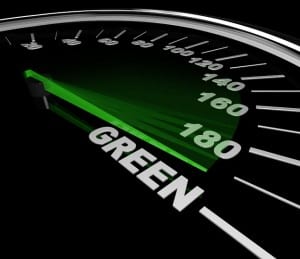Mercedes-Benz provides insight to the future of clean transportation
November 11, 2014Automaker creates a concept vehicle that combines hydrogen, solar, and wind power
German automaker Mercedes-Benz has begun showing off its new concept car, the Vision G-Code. Concept cars are often incredible, as engineers have free reign over what they can make. While most concepts do not make it to the production stage, these vehicles can shed some light on the future of transportation. Mercedes-Benz’ new vehicle is equipped with new technology that could help make transportation more environmentally friendly, harnessing both solar and wind power.
High-tech paint job allows vehicle to generate its own fuel
The Vision G-Code is covered in a multi-voltaic paint, which is capable of generating fuel using solar and wind energy. The vehicle is powered by a conventional electric motor, as well as a hydrogen fuel cell. The electric motor powers the vehicle’s back wheels, while the fuel cell handles the front, as well as some of the vehicle’s electrical components. The hydrogen that the fuel cell needs is produced by the vehicle’s paint job.
Paint can generate electricity for hydrogen production using solar and wind power
 Mercedes-Benz has used pain-on solar technology for the vehicle, allowing it to generate electrical power from sunlight. The paint is also incorporates electrostatic wind technology, allowing energy to produced by the movement of wind over the vehicle’s body. The automaker notes that the high-tech paint removes the need for vehicles to be charged in a conventional sense, as the Vision G-Code can produce its own hydrogen and electrical power.
Mercedes-Benz has used pain-on solar technology for the vehicle, allowing it to generate electrical power from sunlight. The paint is also incorporates electrostatic wind technology, allowing energy to produced by the movement of wind over the vehicle’s body. The automaker notes that the high-tech paint removes the need for vehicles to be charged in a conventional sense, as the Vision G-Code can produce its own hydrogen and electrical power.
New technology could have major implications for the future of clean transportation
There have been no tests concerning the vehicle’s actual fuel efficiency yet. The vehicle exists, primarily, as a showcase of new technology and how transportation can be made more environmentally friendly. By combining various forms of clean technology, Mercedes-Benz has been able to show that clean transportation is actually possible. Commercializing such a vehicle may not be possible for several years, however, as there are still many logistical challenges that must be overcome and there is relatively little market demand for vehicles that can produce their own fuel.

 With over 15 years of reporting hydrogen news, we are your premier source for the latest updates and insights in hydrogen and renewable energy.
With over 15 years of reporting hydrogen news, we are your premier source for the latest updates and insights in hydrogen and renewable energy.